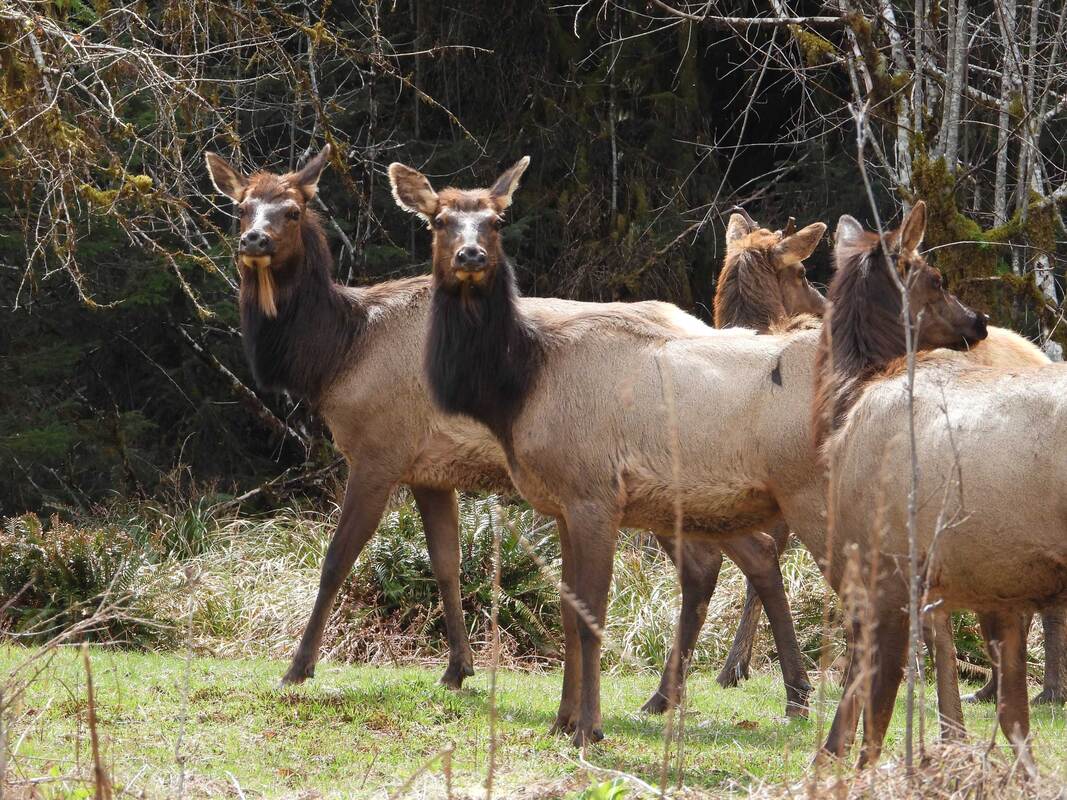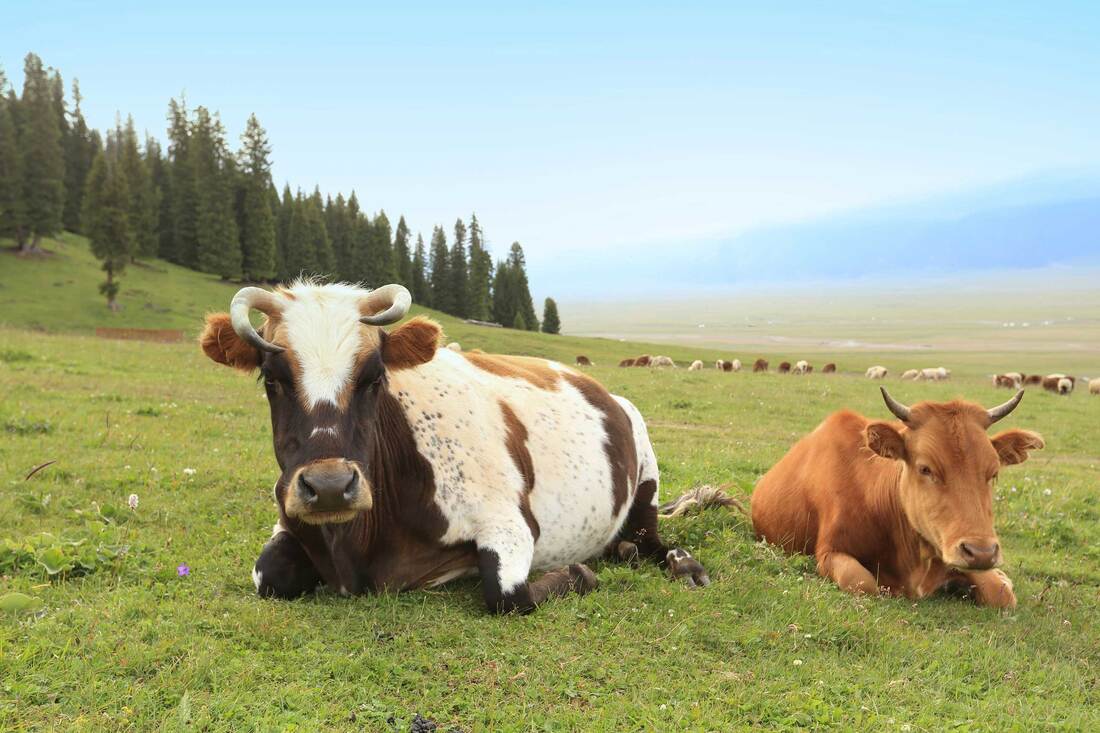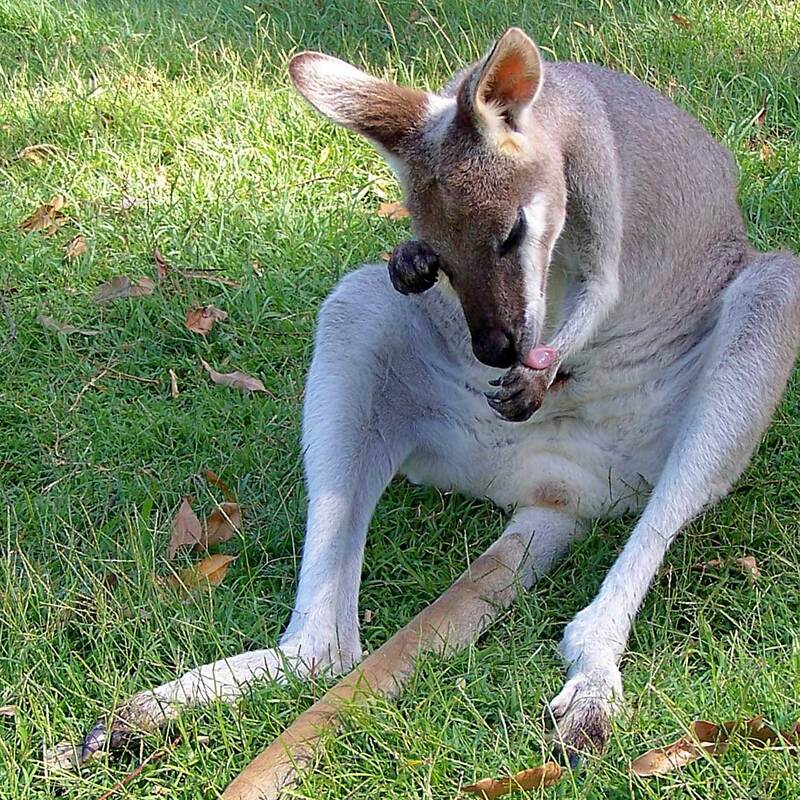|
The cicadapocalypse has definitely arrived. We live in a fairly dense area of Ozarks forest, and cicadas are taking over here. It's quite astounding, actually. Below is one of millions of periodical cicadas invading our forest, making it so loud outside that, at its peak in the afternoon, it literally hurts the ears. Let's learn a bit more about these ear-splitting creatures. First, I'll point out that periodical cicadas are not the same thing as annual cicadas (which are much larger). Missouri has at least seven species of annual cicadas. They emerge later, in the dog days of July and August, and they can be quite loud also. However, a significant emergence of the much smaller periodical cicadas can be overwhelming simply because of their vast numbers. Missouri has several species of 13-year cicadas (this means the nymphs live underground for 13 years, feeding on tree roots, before they emerge, transform into winged adults, and seek out a mate before dying). Biologists tend to lump periodical cicadas into groups called broods, based on when they emerge. The largest brood in Missouri is called Brood 19. This brood is emerging now (May into June, 2024). These are 13-year cicadas, so the last time Brood 19 emerged was in 2011, and before that was 1998. Brood 19 actually includes four species of 13-year cicadas, and it is, by far, the largest brood in Missouri. Brood 19 is also called the Great Southern Brood because they emerge in fifteen states throughout much of the southeastern U.S. At the same time, Brood 13 (consisting of 17-year cicadas) is emerging in parts of Iowa, Wisconsin, northern Illinois, and northwestern Indiana. In some areas, Brood 19 and Brood 13 actually overlap, emerging together—the last time this happened was when Thomas Jefferson was president, in 1803. So, on our property now, the ground is riddled with round holes where the cicadas emerged. Turkeys and other creatures (including squirrels, frogs, birds, lizards, and some snakes) are taking advantage of this rare treat by gorging themselves on the cicadas. Wait... squirrels? Aren't squirrels herbivores? Yes, but they are also opportunistic carnivores, often eating insects and other small creatures when they have the opportunity. I have even seen a squirrel attack and eat a small bird. Isn't nature amazing? Photo credit: 13-year cicada - Stan C. Smith
0 Comments
Did you know some female dragonflies fake their own death to avoid having sex with a male? In moorland hawker dragonflies, the males are often so aggressive that the females risk injury or death during mating. Females, when faced with an aggressive male, will freeze in mid-air, crash onto the ground, and then lie there without moving.
This doesn't mean the females don't mate at all, but they don't want to mate a second time after they've already laid their eggs. Here's the story. When summer begins to heat up, male moorland hawker dragonflies gather at the edges of ponds. When the females approach, the males aggressively pounce on them. The most aggressive males are the ones that get the females. So, the males have evolved to be very aggressive. After mating, the male leaves, and the female lays her eggs. However, as the female leaves the area, often another male will attempt to pounce on her. This is when the female fakes her own death. After all, there's no reason to risk injury or death after she has already laid her eggs, right? And this trick works. Researchers found that more than 60% of females faking their own death successfully escaped the pouncing males. Then, when the researchers approached the "dead" females, the females immediately flew away—proving they were perfectly fine and alert through the whole process. And, 100% of the females who didn't fake their own death were caught by males. This phenomenon is called sexual death feigning, and it has been observed in a few other animal species. However, in praying mantises and a specific type of spider, it is the males that fake their own death, to avoid being cannibalized by larger, aggressive females. I’m being serious here. Think about it. Those little strips of paper are in perfect shape when you crack open a fortune cookie. They don’t have moisture stains from being put into the cookies while the cookie dough was still moist and flexible. They aren’t stuck to the baked dough, as you might expect if they were put in when the dough was moist. And the papers show no signs of burning or heat discoloration from when the cookie was baked. This is, indeed, a great mystery.
First, let’s look at the origin of fortune cookies, which in itself is a bit of a mystery. Some fortune cookie experts believe the tradition was inspired by 14th century Chinese rebels fighting Mongol invaders. According to legend, a Taoist priest and his followers sent critical messages back and forth hidden inside of Chinese moon cakes. Other experts believe fortune cookies came from Japan, particularly rice cakes that had paper fortunes stuffed inside. These were made at the Hyotanyama Inari shrine in the 1800s. Still other experts believe the idea started in the 1800s in the United States, when Chinese railroad workers handed out small cakes containing notes with holiday wishes. Regardless of where the inspiration came from, it is generally agreed that, in 1914, a man named Makoto Hagiwara, who owned a Japanese tea garden in San Francisco, started serving tea and fortune cookies. So, modern fortune cookies are as American as baseball and apple pie. Let’s get back to the original question of how the fortunes get into the cookies. As it turns out, the process is simple. The cookies are baked before inserting the fortunes. The key ingredient that makes it work is the sugar. Originally, when fortune cookies were made by hand, the dough was flattened into a three-inch circle and then baked. When still warm, the cooked dough remained flexible. The paper fortune was placed on the warm, fresh-baked cookie, then the sides were folded over using chopsticks. The timing was important because the sugar would cool quickly and the cookie would become hard, with a shiny surface. In 1974, Edward Louie invented a machine that would automatically insert the fortune and then fold the cookie. Soon, as the machines improved, fortune cookie bakeries were using machines that could produce 8,000 or more fortune cookies per hour. Now and then I get one of these cookies without a slip of paper inside—it's my misfortune. On our recent trip to Washington state, Trish and I visited the Quinault Rainforest. This is a spectacular temperate rainforest (a rainforest in a temperate region, usually consisting of a mix of coniferous and broadleaf trees). We were lucky enough to come upon a herd of Roosevelt elk.
Roosevelt elk are the largest subspecies of the North American elk (Cervus elaphus). These huge mammals can weigh up to 1,100 pounds (500 kg), making them one of the largest members of the deer family (which includes deer, elk, moose, and caribou). Male elk grow massive antlers, which are shed after the mating season each year. Keep in mind that antlers fall off each year, whereas horns are permanent. One exception is the North American pronghorn, which grows horns, but the horn sheath falls off and is regrown each year. Anyway, male elk shed and regrow their massive antlers annually. If you look closely, you'll see that the third elk from the left is a male just starting to grow its new antlers. Roosevelt elk are named after President Theodore (“Teddy”) Roosevelt. Did you know cows often face north or south while grazing? I didn’t realize this until I read a National Geographic article about it recently. Scientists have limitless curiosity, and a team recently examined thousands of Google Earth satellite images. They realized something humans had heretofore never really noticed on a large scale. Grazing and resting cows often line their bodies up along the Earth’s magnetic poles. Not always, of course, but enough to establish a general pattern. Grazing and resting cows usually face north or south. Why? How? This pattern happens on all six of the cow-inhabitable continents, and it’s consistent regardless of the terrain or other factors like wind or the angle of the sun. (disclaimer: this is not a universally accepted phenomenon—some scientists suggest more data needs to be collected before it is conclusive).
As it turns out, nobody really knows why cows do this. Some animals, particularly birds, bees, and fish, have an internal compass, but this is the first evidence of an internal compass in a large mammal. Interestingly, the closer the cows are to the north or south poles, the less accurate they are with their orientation. Apparently, their internal compass works better the nearer they are to the equator. Some experts suggest this is somehow related to navigation. Maybe, in the distant past, cow ancestors used this compass to migrate, or to find their way home every day after grazing over a large area of land. Other experts suggest it is some kind of strategy for avoiding predators, perhaps allowing the cows to keep themselves spatially oriented in herds (kind of like fish schooling behavior). I wonder what happens to cows if they can’t orient themselves north and south, such as in some feedlots. Does this stress the cows and make them less healthy? I am going to add my own hypothesis (as silly as it might be) to this unsolved mystery. I’m not a cow expert, but I get the impression cows like routine, and they like uniformity. Maybe, just maybe, they orient themselves so that they are always doing something familiar, like they did yesterday and the day before. So, they orient themselves to be just like all the other cows in their herd. Maybe cows feel comfortable being just like all the other cows. Individuality does not seem to be a thing with cows. Did you know kangaroos cool themselves by licking their arms? Many kangaroos in Australia live in extremely hot places, often over 100 degrees Fahrenheit. In these conditions, large mammals can have a hard time keeping their core body temperature from getting too hot. Many mammals, like humans, moderate their temperature by sweating.
Kangaroos are unusual in that they sweat when they are hopping (the kangaroo version of running), but when they stop hopping, they stop sweating and switch to panting instead. They pant at up to 300 breaths per minute, which keeps air flowing through their windpipe to cool their interior. But sometimes this isn't enough, which is when kangaroos start licking their forearms. Kangaroos have special networks of densely packed blood vessels just under the skin of their forearms. When they moisten their arms by licking, the saliva evaporates, cooling the skin, which cools the blood just below the skin. This cooled blood then travels throughout the rest of the body, cooling the entire kangaroo. Cool, huh? |
Stan's Cogitations
Everyone needs a creative outlet. That's why I write. Archives
July 2024
|







 RSS Feed
RSS Feed